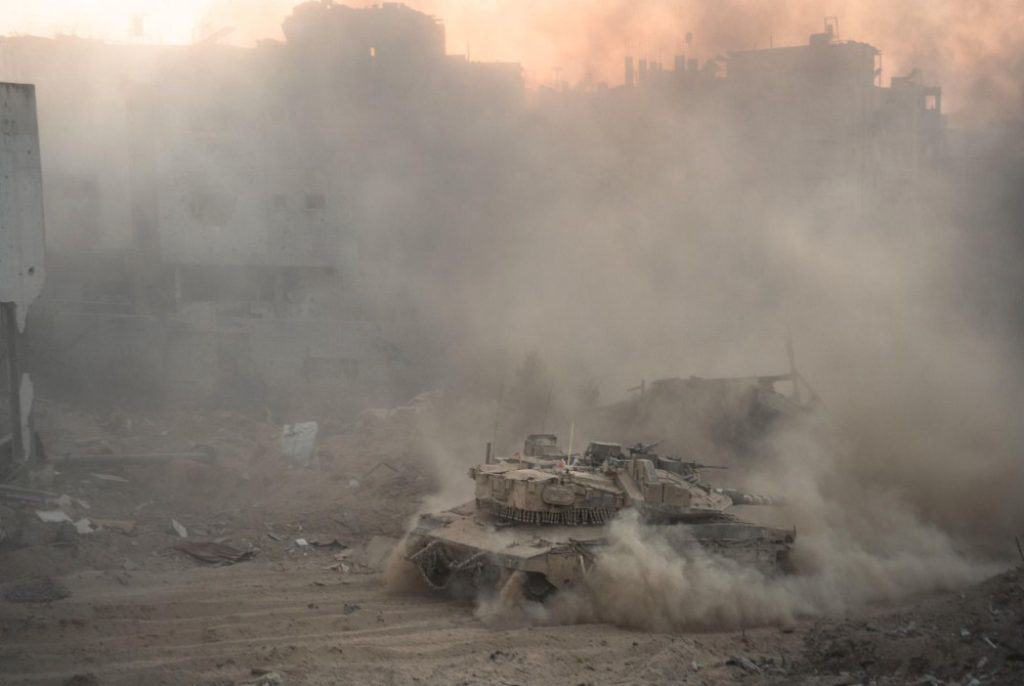
The Israel Defense Forces IDF) released the first of what is expected to be numerous inquiries into specific battles and operational failures that took place during the Hamas attack on October 7, 2023. The first inquiry focuses on the battle for Kibbutz Beeri, where Hamas killed 101 civilians and took 30 hostages. Along with the massacre at the Nova Music Festival and attacks on several other Kibbutzim along the border, Beeri experienced one of the worst death tolls in a single location on October 7.
The findings were released during 40 hours of intense activity on multiple fronts for the IDF and Israel. Israeli forces ended a two-week battle in the northern Gaza neighborhood of Shejaiya on July 10, having eliminated 150 terrorists and destroyed eight tunnels.
Led by 98th Division paratroopers and the 7th Armored Brigade, the sweep of Shejaiya exemplified Israel’s raiding strategy, where forces return to neighborhoods several times to reduce terrorist capabilities. The reduction in capabilities of Hamas and other groups is evident from the Israeli troops’ increased use of thin-skinned and open-topped vehicles such as Humvees, a detail noted by journalists who visited the area.
As the operation in Shejaiya was completed, the IDF also sent its 99th Division into northern Gaza neighborhoods around the Gaza City center. Among the targets of the raid was the UNRWA headquarters, where the IDF said terrorist operatives were embedded. “Over the past day, the troops located large quantities of weapons in the area of the headquarters, including explosive drones, grenades, explosive devices, snipers, mortar shells, rockets, and RPGs,” the IDF said on July 10.
IDF Chief of Staff Lieutenant General Herzi HaLevi met with Brigadier General Barak Hiram, the commander of the 99th Division, on July 9 and contrasted the operations in Gaza City with those in Shejaiya and southern Gaza. “We go on the missions to destroy as much [terrorist] infrastructure as possible, to eliminate as many Hamas operatives as possible, to eliminate as many commanders as possible. In the end, it reduces Hamas’ capabilities, allows us to advance with the achievements, allows us to carry out a very important mission: pressure,” Halevi said.
Hamas is feeling this pressure in terms of the reduction of its forces in Gaza. On July 10, Israeli Defense Minister Yoav Gallant said that 60 percent of Hamas terrorists have been eliminated in nine months of fighting. He claimed that most of the 24 Hamas battalions that existed on October 7 have been defeated.
However, it is clear Hamas still has a significant presence in some areas of Gaza. In central Gaza, for instance, the IDF carried out airstrikes on July 10, targeting two Hamas commanders. They included Hassan Abu Kuik, head of operational security in Hamas’s Internal Security Forces in the Gaza Central Camps, and Naser Mehanna, a team commander in Hamas military intelligence.
An Israeli airstrike near Alawda School close to Khan Younis also targeted a Hamas member who the IDF said was involved in the October 7 attack. Locals said civilians were killed, and the IDF stated it was “looking into the reports that civilians were harmed.” These strikes illustrate that Hamas still has control of these central Gaza areas. In addition, five rockets were fired from Rafah at southern Israeli communities on July 11, indicating that the terror groups in Gaza seek to show they still have munitions left that can threaten Israeli border communities.
One of those communities near the border is Kibbutz Beeri. The IDF’s inquiry into the failure to protect this kibbutz was presented to surviving community members and then released to the public on July 11. During the battle to re-take Beeri from approximately 340 terrorists who had infiltrated, the IDF concluded that 31 security personnel were killed, including 23 IDF soldiers and members of the civilian rapid response team, and eight officers of the Israel Police.
The IDF inquiry concluded that Israeli forces were “not prepared for the extensive infiltration scenario that occurred on October 7th, involving multiple infiltration points by thousands of terrorists attacking dozens of locations simultaneously.”
No reserve forces were available for many hours as the Kibbutz was attacked. This meant the kibbutz was primarily defended by its local, lightly armed civilian volunteer security team from 6:30 in the morning until roughly 1:30 pm. Not until the afternoon did enough IDF reinforcements arrive to finally outnumber the terrorists who had infiltrated the community.
More reports will follow the inquiry into the battle for Beeri in the coming months. They will likely present similar findings in terms of the forces on the border not being prepared for such a large attack at so many points. However, in other areas, the attackers were stopped, and massacres were prevented, often by the quick action of local security teams.







